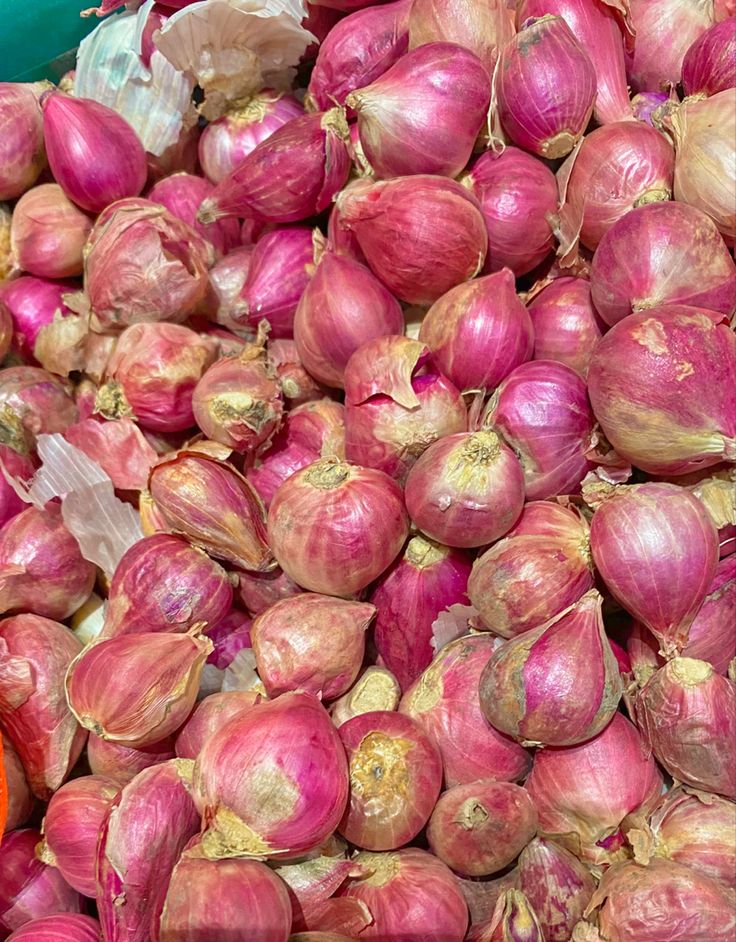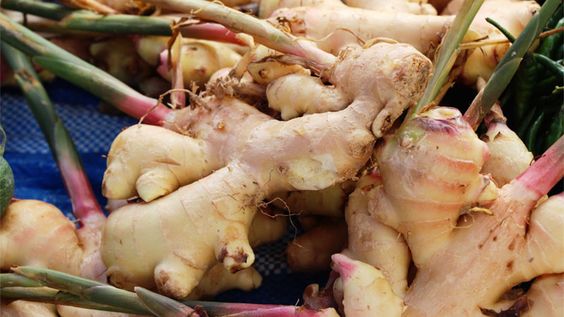Disease in Shallot Plants: Causes, Prevention, and Management
Disease in Shallot Plants are an important vegetable crop in many regions due to their high culinary and medicinal value. However, like any agricultural crop, shallots face challenges from various diseases that can significantly impact yield and quality. Understanding these diseases is vital for farmers, gardeners, and agricultural experts who aim to maximize shallot production.
Contents
- 1 Common Diseases in Shallot Plants
- 2 Symptoms of Shallot Plant Diseases
- 3 Causes of Diseases in Shallot Plants
- 4 Prevention Strategies
- 5 Disease Management Techniques
- 6 Benefits of Disease Prevention and Control
- 7 Goals of Effective Disease Management
- 8 Ideas for Improving Shallot Plant Health
- 9 Topic Suggestions for Disease in Shallot Plants
Common Diseases in Shallot Plants
Fungal Diseases
a. Purple Blotch (Alternaria porri)
Purple blotch is one of the most common fungal diseases affecting shallot plants. It is caused by the fungus Alternaria porri, which thrives in humid conditions.
Symptoms:
- Small, water-soaked lesions on the leaves.
- Lesions expand and turn purple or brown, with a yellow halo.
- Leaves may wither, leading to reduced bulb size.
Management:
- Avoid overhead irrigation to reduce leaf wetness.
- Rotate crops to prevent the buildup of the fungus in the soil.
- Apply fungicides as a preventive measure.
b. Downy Mildew (Peronospora destructor)
Downy mildew is another significant fungal disease that affects shallot plants, especially in cool and wet conditions. This disease spreads quickly, causing severe damage if not managed.
Symptoms:
- Pale green or yellow patches on the leaves.
- Purple to grey mold growth on the underside of leaves.
- Affected leaves collapse and die.
Management:
- Improve air circulation by spacing plants appropriately.
- Remove and destroy infected plants to prevent the spread.
- Use resistant varieties when available.
c. White Rot (Sclerotium cepivorum)
White rot is caused by the soil-borne fungus Sclerotium cepivorum, which affects the bulbs of shallot plants. It is a destructive disease that can remain in the soil for many years.
Symptoms:
- Yellowing and wilting of leaves.
- Soft, decayed bulbs with white fungal growth.
- Black sclerotia (fungal survival structures) on the bulbs.
Management:
- Practice long-term crop rotation with non-Allium crops.
- Use disease-free planting material.
- Apply fungicides to infected areas.
Bacterial Diseases
a. Bacterial Soft Rot (Pectobacterium carotovorum)
Bacterial soft rot is caused by Pectobacterium carotovorum, a pathogen that thrives in warm and wet conditions. It can affect both the leaves and bulbs of shallot plants.
Symptoms:
- Water-soaked lesions on leaves and bulbs.
- Soft, mushy bulbs that emit a foul odor.
- Rapid decay of the affected parts.
Management:
- Ensure proper drainage to avoid waterlogging.
- Avoid mechanical damage to plants during cultivation.
- Use bactericides in case of severe infection.
Viral Diseases
a. Onion Yellow Dwarf Virus (OYDV)
Onion yellow dwarf virus is a common viral disease that affects shallots and other members of the onion family. It is spread by aphids and infected plant material.
Symptoms:
- Stunted growth with yellowing leaves.
- Leaf curling and distortion.
- Reduced bulb size and yield.
Management:
- Control aphid populations using insecticides or biological control.
- Use virus-free planting material.
- Remove and destroy infected plants.
b. Leek Yellow Stripe Virus (LYSV)
This virus is also transmitted by aphids and affects shallot plants. It causes yellow stripes on leaves, leading to reduced plant vigor and bulb size.
Symptoms:
- Yellow streaks or stripes on the leaves.
- Stunted plant growth.
- Premature leaf senescence.
Management:
- Control aphid vectors.
- Plant resistant varieties if available.
- Practice crop rotation to reduce virus prevalence.
Nematode Infestations
a. Root-Knot Nematode (Meloidogyne spp.)
Root-knot nematodes are microscopic worms that infect the roots of shallot plants, causing significant damage. They are soil-borne and thrive in warm conditions.
Symptoms:
- Galled or swollen roots.
- Stunted plant growth and yellowing leaves.
- Poor bulb development.
Management:
- Practice crop rotation with non-host crops.
- Use nematicides to reduce nematode populations.
- Solarize the soil before planting to kill nematodes.
Symptoms of Shallot Plant Diseases
Identifying the symptoms of disease in shallot plants is crucial for early detection and management. Common symptoms include:
- Yellowing or browning of leaves.
- Stunted growth or reduced vigor.
- Lesions, spots, or mold on leaves.
- Bulb rot or softening.
- Wilting or leaf collapse.
- Galls or swelling on roots.
These symptoms vary depending on the specific disease and environmental conditions. Farmers and gardeners should regularly inspect their shallot plants for signs of infection and take prompt action when necessary.

Causes of Diseases in Shallot Plants
Disease in Shallot Plants,The causes of diseases in shallot plants can be broadly categorized into four main groups:
- Fungal Infections: Fungi such as Alternaria porri, Peronospora destructor, and Sclerotium cepivorum thrive in humid, wet conditions and can infect shallot plants through soil, water, or air.
- Bacterial Infections: Bacteria like Pectobacterium carotovorum spread through water, plant debris, or infected tools and cause soft rot and decay in shallot plants.
- Viral Infections: Viruses such as OYDV and LYSV are transmitted by aphids and infected plant material. They cause stunted growth and reduced bulb size.
- Nematode Infestations: Root-knot nematodes invade the roots of shallot plants, causing swelling and reduced nutrient uptake, leading to poor plant growth.
Environmental factors, such as moisture, temperature, and soil health, also play a significant role in disease development.
Prevention Strategies
c ,Preventing diseases in shallot plants requires a proactive approach that focuses on maintaining plant health and minimizing exposure to pathogens. Some effective prevention strategies include:
- Crop Rotation: Avoid planting shallots in the same location year after year to reduce the buildup of soil-borne pathogens.
- Use of Resistant Varieties: Select disease-resistant shallot varieties when available to reduce susceptibility to infections.
- Proper Irrigation Practices: Avoid overhead watering, as wet foliage promotes the growth of fungal pathogens. Use drip irrigation instead.
- Soil Health Management: Maintain healthy soil with proper pH levels and organic matter to improve plant resilience to diseases.
- Hygiene and Sanitation: Clean tools, equipment, and planting material to prevent the spread of pathogens.
- Aphid Control: Monitor and control aphid populations, as they are vectors for many viral diseases.
Disease Management Techniques
Disease in Shallot Plants,When prevention measures are not enough, disease management strategies must be implemented to minimize losses. These include:
- Fungicide Application: Disease in Shallot Plants,Use fungicides to control fungal infections like purple blotch and downy mildew. Ensure that the fungicides are applied according to recommended guidelines.
- Bactericide Use: Disease in Shallot Plants,In cases of bacterial soft rot, bactericides can be applied to reduce the spread of bacteria.
- Nematicides and Soil Solarization: Disease in Shallot Plants,Nematicides can be used to manage nematode infestations, while soil solarization involves covering the soil with plastic to trap heat and kill soil-borne pathogens.
- Biological Control: Disease in Shallot Plants,Introduce natural predators or beneficial microbes that suppress pathogen populations and promote plant health.
- Sanitation: Remove and destroy infected plants to prevent the spread of diseases. Clean and disinfect tools after use.
Benefits of Disease Prevention and Control
Disease in Shallot Plants,Effective disease prevention and control offer numerous benefits, including:
- Increased Yield: Disease in Shallot Plants,Healthy shallot plants produce higher yields, leading to greater profits for farmers.
- Improved Quality: Disease-free bulbs are of higher quality, with better storage and marketability.
- Cost Savings: Preventing diseases reduces the need for costly treatments and minimizes crop losses.
- Long-Term Viability of the Crop: Disease in Shallot Plants By controlling diseases effectively, shallot farmers can sustain their crop production over many growing seasons, ensuring consistent income and food supply.
- Reduced Labor Costs: Disease in Shallot Plants,Early detection and prevention of diseases reduce the need for labor-intensive measures later in the crop cycle, such as removing heavily infected plants or applying treatments multiple times.
Goals of Effective Disease Management
Disease in Shallot Plants,The primary goals of disease management in shallot plants are to:
- Minimize Crop Losses: Disease in Shallot Plants,The most immediate goal is to prevent or reduce crop losses due to diseases, ensuring that as many plants as possible reach maturity and produce high-quality bulbs.
- Maintain Plant Health: Disease in Shallot Plants,Healthy plants are more resistant to disease, making plant health a critical aspect of disease management. Proper soil nutrition, adequate water, and balanced soil microbiomes all contribute to plant health.
- Improve Crop Longevity: Disease management practices should extend the productive lifespan of shallot crops, allowing them to thrive throughout the growing season without significant disease setbacks.
- Reduce Reliance on Chemicals: Disease in Shallot Plants,Although chemical fungicides, bactericides, and nematicides have their place, over-reliance on these can lead to resistance development in pathogens. Integrated pest and disease management techniques aim to reduce chemical inputs while maintaining crop productivity.
- Promote Sustainable Agriculture: Disease in Shallot Plants,Disease management strategies should align with the principles of sustainable agriculture, where environmental, economic, and social factors are considered. This ensures that future generations can continue growing shallots without significant ecological harm.
- Optimize Economic Returns: Disease in Shallot Plants By managing diseases efficiently, farmers can maximize their economic returns, reducing expenses related to disease treatments, labor, and potential replanting costs.

Ideas for Improving Shallot Plant Health
Disease in Shallot Plants For those seeking innovative approaches to managing diseases in shallot plants, consider the following ideas:
- Precision Agriculture Tools: Utilize modern technology like drones, sensors, and satellite imagery to monitor plant health and detect early signs of disease. These tools can help farmers apply targeted treatments, reducing waste and ensuring timely interventions.
- Organic Disease Control Methods: For those looking to reduce chemical inputs, explore organic alternatives such as neem oil, copper-based fungicides, and microbial inoculants that enhance soil health and suppress disease-causing organisms naturally.
- Intercropping: Consider intercropping shallots with other crops that have natural pest- or disease-repelling properties. For example, planting marigolds near shallots can help repel nematodes.
- Green Manure and Cover Crops: Incorporating green manure or cover crops like clover and rye can improve soil fertility, increase beneficial microbial populations, and reduce the prevalence of soil-borne pathogens.
- Biocontrol Agents: Use biocontrol agents like Trichoderma and Bacillus subtilis, which are beneficial fungi and bacteria that naturally inhibit the growth of pathogens like Sclerotium cepivorum (the cause of white rot) and other soil-borne diseases.
- Improved Irrigation Systems: Optimize irrigation practices to avoid water stress or waterlogging, both of which can create favorable conditions for disease development. Drip irrigation systems can deliver water directly to the plant’s roots, reducing humidity levels around the foliage and limiting the spread of fungal diseases.
- Regular Plant Inspections: Make it a habit to inspect plants regularly for any early signs of disease. Early detection allows for more effective treatments before diseases spread too far.

Topic Suggestions for Disease in Shallot Plants
Disease in Shallot Plants,While this guide covers the essentials of managing diseases in shallot plants, several areas of research remain underexplored. Below are some topic suggestions for further investigation:
- Climate Change and Shallot Diseases: How are shifting climate patterns, including increased temperatures and erratic rainfall, affecting the prevalence of diseases in shallot plants? What new challenges might farmers face in controlling these diseases?
- Breeding Disease-Resistant Varieties: Further research into breeding shallot varieties that are resistant to a broader range of fungal, bacterial, viral, and nematode diseases could offer sustainable solutions to disease management.
- Impact of Soil Microbiome on Disease Resistance: How can the manipulation of the soil microbiome improve shallot plant resistance to diseases? Research into probiotic soil treatments could offer new, eco-friendly approaches to disease control.
- Innovations in Biopesticides: Exploring the development of new biopesticides that target specific pathogens without harming beneficial organisms could significantly improve sustainable disease management practices.
- Economic Impact of Disease on Shallot Farms: Quantifying the economic losses due to disease outbreaks and identifying cost-effective disease prevention strategies could help farmers make more informed decisions.
- Integrated Pest and Disease Management (IPDM) in Shallot Farming: A deeper study of how integrated pest and disease management systems can be tailored to shallot farming, particularly in different agro-climatic zones, could provide farmers with localized solutions for disease control.




